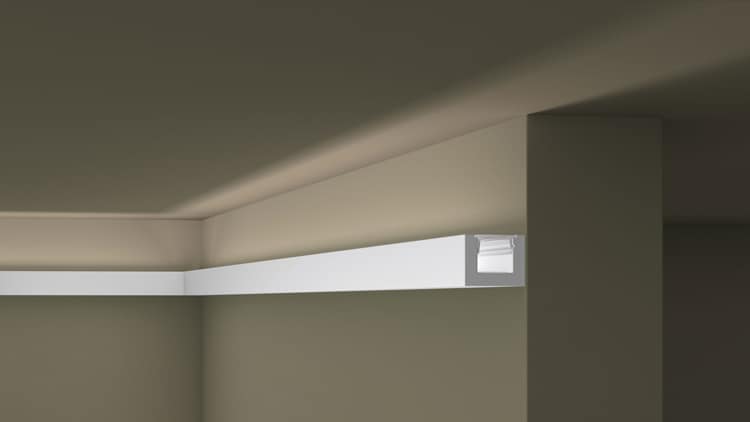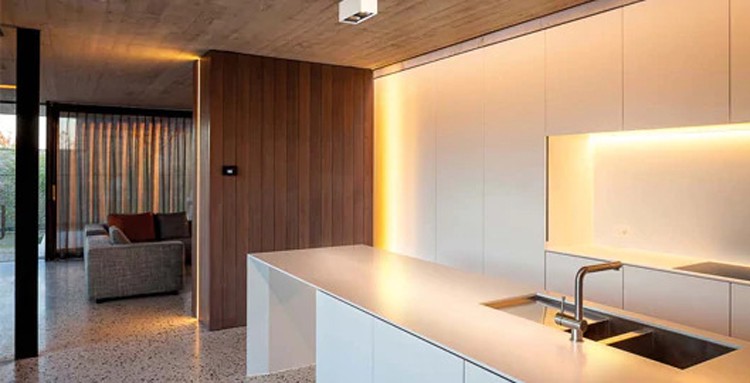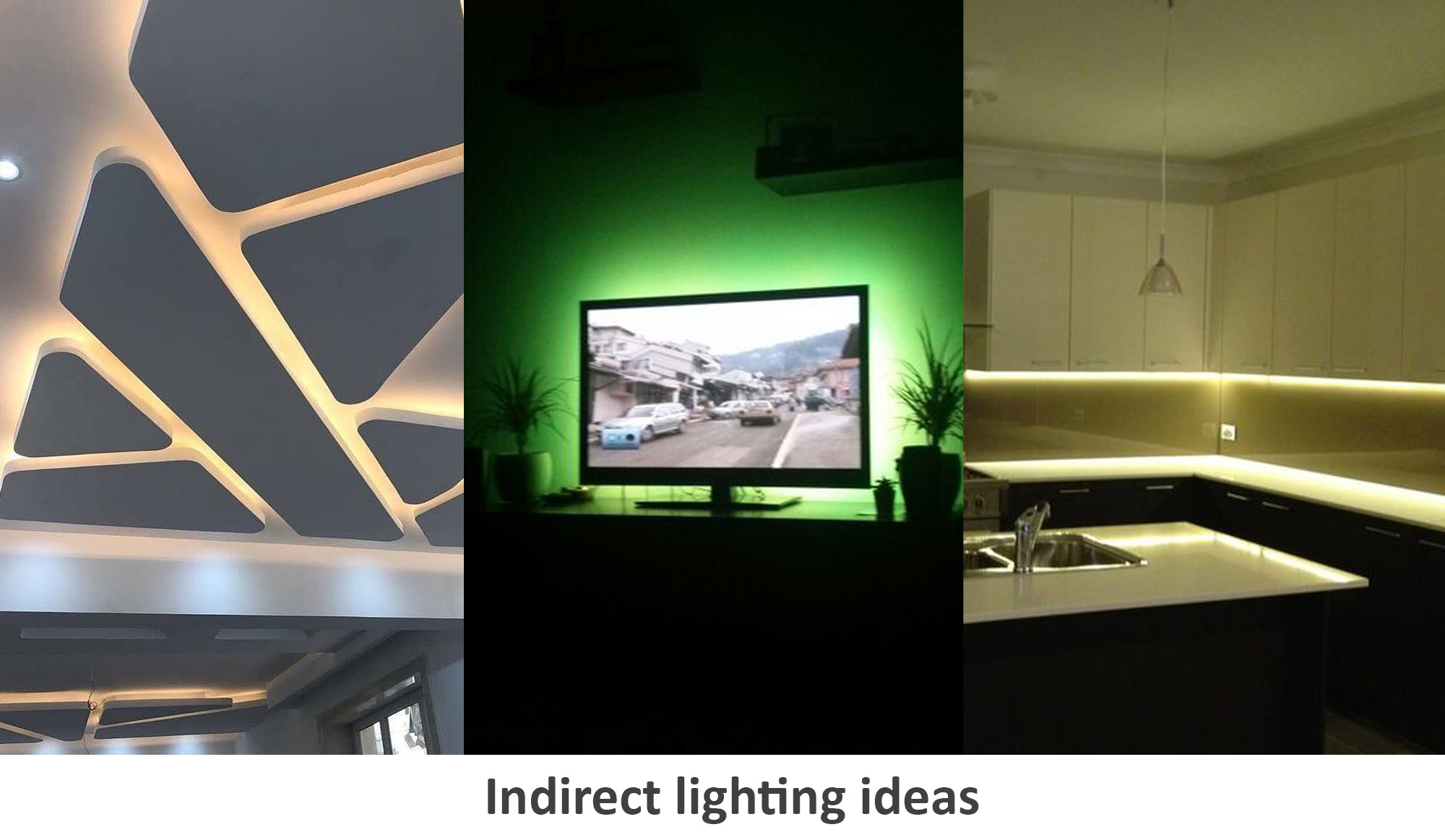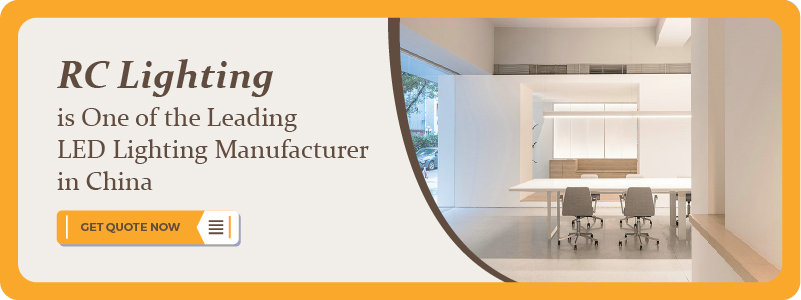What is Direct Lighting?
Direct lighting is a type of lighting that focuses the light beam on a particular object or area. It is also the most common type of lighting you see daily.
Direct lighting is used for various purposes. Festive activities like a stage performance can be lit up using this efficiently. Direct Light fixtures also provide excellent illumination for focus-centric tasks like reading and writing. And it is perfect for an official setup.
Directed Lighting fixtures are mostly placed at the ceiling, with some exceptions, of course, and provide illumination to the intended area. The light falls primarily in a focused area without diffusing the surrounding.
Direct Lighting Fixtures are elegant and practical and have various types.

Examples of Direct Lighting
The following are the most commonly used direct lighting fixtures:
Downlights
Downlights are usually installed on the ceiling and throw light upon designated areas. There are a variety of indoor light fixture designs available. Troffer, for example, is a rectangular light fixture fixed in the ceilings of commercial places.
LED Recessed Downlights are also becoming a preferred choice among interior designers because of their minimalistic and elegant design. And they provide high enough lumens to carry out day-to-day tasks efficiently.
These downlights used fluorescent and incandescent lamps, but LEDs rapidly replaced them due to their versatility.
Spotlights
LED Spotlights direct a concentrated beam of light onto a specific target. They usually operate on higher voltages and have high-intensity illumination.
They aim to highlight a particular feature or direct people’s focus to something meaningful. They are best for indoors where you want to highlight a particular art piece or decoration—also a great option during festivities where LED Spotlights can direct the light over a stage performance.

Benefits of Direct Lighting
Direct lighting is one of the most popular and elementary Light distribution techniques. And you see it almost everywhere. Here are some benefits that Direct Light provides:
Focus
Focused illumination on the target object without wasting light anywhere else.

Highlight
Excellent for highlighting a specific feature or directing people’s attention to something.
Safety
Direct lighting luminaires provide excellent illumination in high-risk areas like corridors or stairs.
Aesthetic
Since direct lighting fixtures are visible, there is plenty of room for elegant and magnificent designs. The fixture itself can become part of the decor.
Drawbacks of Direct Lighting
Direct lighting has a few drawbacks, but the light can be reflective sometimes, especially when it falls upon shiny surfaces. It can also cast sharp shadows and unnecessary glare on the eyes. But with the right amount of intensity and placement, these issues can be solved.
Where to Use Direct Lighting?
Direct lighting is efficient in indoor residential and commercial areas. You can use them to focus light on kitchen counters and illuminate drawing rooms and lounges in-home.
Official places have tremendous use of Troffer and Recessed LED direct lighting. Art galleries can use Spotlights to highlight sculptures and paintings—a direct illumination with many practical uses.

Types of Light Distributions
The direction and reflection of light primarily determine several types of light distributions. The primary types include:
General Diffuse Lighting
General Diffuse Lighting is a mixture of direct and indirect lighting that diffuses light evenly across the room. Almost half of the produced light is directed downwards, while the rest is upward.
Indirect Lighting
Indirect light is directed toward the ceiling, making the large surface area a source of reflective illumination.
Semi Indirect Lighting
Semi-in direct lighting fixtures direct a small portion of light downwards, while 90% of illuminance is directed upwards—great for decorations and creating an aesthetic look.
Direct Lighting
Direct lighting, simply put, casts light directly toward a focal point. It provides sufficient light to perform productive tasks like working, reading, and writing.

What is Indirect Lighting?
Indirect lighting means illuminating a room with ‘hidden’ light fixtures. The light emitted from the hidden bulb is reflected off surfaces such as walls and ceilings. So, the resulting illumination reflects the original light source hidden behind a structural element.
Indirect lighting is a form of ambient lighting (a diffused and evenly spread illumination). It creates homogenous, soft, and shadowless illumination throughout the room. Since it is a reflected and diffused light form, the resulting illumination is easy on the eyes, unlike direct lighting, which creates bright light spots and strong shadows in a room.
In most cases, indirect lighting is achieved by placing the fixture in a position that directs lights upward toward a ceiling.
The light bounces off and is deflected downward, creating a diffused effect. But this is not a hard and fast rule. You can also create indirect lighting by directing the light downward or sideways and deflecting it to the nearest wall. The main idea is to deflect the light source and let it fall into the desired place.

Benefits of Indirect Lighting
Indirect lighting is used in many indoor and outdoor projects. Let’s discuss their benefits and applications.
Illusion of Spaciousness
Indirect indoor lighting is usually done to create smooth illumination in the room. The result can give an illusion of spaciousness and vastness. If a room is small and congested, an indirect light fixture can make it look bigger and wider without much effort.
Reduces Glare
One of the significant advantages indirect lighting offers is that it reduces glare. The deflected light already loses some portion of its brightness and spreads evenly throughout a region. There is no chance of glare in indirect lighting. Due to this feature, indirect lighting is applied in indoor applications where glare must be avoided.
Rooms such as TV lounges, computer labs, libraries, and office spaces need easy light on the eyes.
Creates a Relaxing Ambiance
Indirect lighting will light up a room subtly and smoothly. Since the illumination is not harsh and jarring, it creates an illusion of peace. In residential projects, a relaxing ambiance is mainly required.
The dining room, bedrooms, and bathrooms are best lit with indirect lights. Other applications include restaurants, hotels, spas, salons, meeting areas, parks, and other recreational places.

Highlights Specific Elements
Indirect lighting is popularly used in highlighting particular objects and elements indoors or outdoors. For instance, you can use LED strips to create a highlighting effect by placing the light fixtures at the back of your television, PC, bed headboard, or wall mirrors. The light bounces off the wall behind the element, making the element more prominent in the room.
Under-cabinet lighting is trendy these days. It reduces glare and throws adequate lighting on the workstation.
Similarly, indirect lighting can be designed to create particular geometrical highlights on the ceiling or walls. You can only illuminate the edges of the room.
Another way to bring aesthetics into a room is by creating a ‘false ceiling’ holding light fixtures behind them. It creates warm and elegant lighting.

Drawbacks of Indirect Lighting
- The brightness of a light bulb is reduced in indirect lighting. The overall efficiency is reduced.
- Indirect lighting is not preferred in applications where high brightness and clear visibility are required.
- If only the ceiling is illuminated in a room, it can result in poor overall visibility.
Best Strategies For Lighting Up Indirectly
Perform a little brainstorming before deciding on the lighting fixtures and design you want to achieve with indirect lighting.
Analyze the Nature of the Project
To pull off the perfect indirect lighting, a designer must first measure and grasp the dimensions and features of architecture completely. He must determine where the lighting fixtures will be ‘hidden’, what part of the room (ceiling, walls, floors, specific features) will be illuminated, and how much intensity is required.
When to Use Indirect Lighting?
Always keep in mind the application. You cannot go for indirect lighting in areas where precise tasks are performed, such as warehouses, factories, laboratories, showcases, etc. Such applications need direct lighting or a blend of indirect and direct lights.
Indirect lighting is preferred in areas requiring ambient lighting, a relaxing environment, and reduced glare. Such applications include rooms in a house, kitchen, bedrooms, study areas, schools, offices, lounges, restaurants, hotels, motels, etc.

Examples of Indirect Light Fixtures
Any lighting fixture can achieve indirect lighting. It mainly depends on the placement and design of the fixture itself.
In indoor lighting, you can use pendant lights and wall lamps with diffusers of various shapes and sizes, floor lamps, strip lights, recessed lights, and linear lights to create deflected lighting. In architectural lighting applications, you can go for spotlights, floodlights, and track lights.
Placement of Fixtures
You can opt for brighter wall paint, such as white and matte, for better results. You can control the diffusion rate by moving the fixture closer to or away from the deflection wall. For brighter results, keep the fixture close to the wall. There are no fixed rules regarding indirect lighting. You should experiment with the lights to achieve the desired outcome.
Is Indirect Lighting Better Than Direct Lighting?
Each of these lighting styles has its importance and applications. Not one lighting design is better than the other. Depending on your preferences, you can avoid direct lighting by adding more lumens through indirect lighting.
In indirect lighting, you will need more bulbs with higher lumens to achieve the same level of brightness you can achieve with fewer bulbs indirect lighting. But direct lighting means you are adding more glare to the project. In the end, it all boils down to your requirements.
Using Direct and Indirect Lighting Together
The best solution is to use a blend of both indirect and direct lighting. To cater to both tasks of creating ambient light and enough brightness for performing tasks such as reading and cooking, you can opt for fixtures that can do both.
This is achieved by using semi-indirect lighting fixtures. Indirect and direct lights complement each other and overcome each other’s shortcomings.
Final Words
This article explains how both direct and indirect lights are important and where to use them in your projects.
RC lighting has successfully manufactured indoor and outdoor lights for all lighting projects. Contact us for advice, consultation, or quotes. We are looking forward to helping to reach new levels in your businesses.




